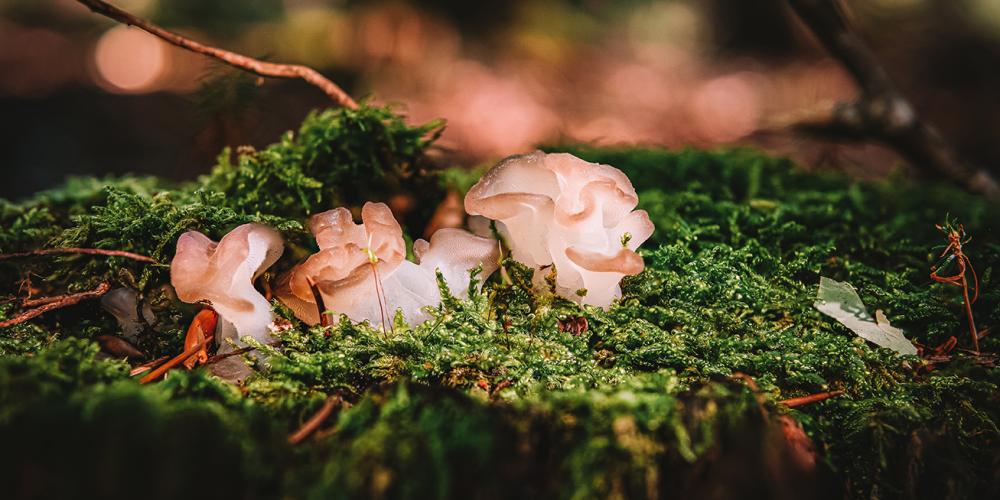
Tremella Mushrooms, Benefits and Side Effects
Tremella mushrooms are unlike any other cap and stem mushroom variety you have ever seen. Tremella mushrooms look like a ‘loofah’ or a sea creature rather than the mushrooms you would eat. Also known as the Snow fungus, Tremella mushrooms have a very high-water content and display a multitude of skin benefits.
Historical use
Tremella, pronounced tree-meh-la, are found growing in tropical regions and subtropical regions in North America, China and some parts of Asia. Tremella, or Tremella fuciformis, is a highly valued historical treasure of China and due to its rarity was only available to a few people who could afford it. Like many mushrooms, Tremella grows on wood, however it survives on another fungus also colonising the same area and this makes it a ‘mycoparasite’.
What compounds do Tremella mushrooms contain?
Tremella mushrooms contain a variety of polysaccharides that help to retain water and so hydrate the body. They also contain food-state vitamin D which helps with the absorption of calcium into the bloodstream. These mushrooms are also rich in fibre, contain protein, antioxidants and 1,3/1.6 beta glucans. In addition, these mushrooms contain N-acetylglucosamine and glucuronic acid for detoxification.
Benefits of Tremella mushrooms
With such a wide variety of compounds found within these mushrooms, it is not surprising to learn that Tremella mushrooms benefits are also wide and varied. I have highlighted some of the benefits of these medicinal mushrooms which include:
- May help bone health – with food-state vitamin D, these mushrooms aid calcium absorption and therefore may support bone density.*
- With a wide variety of antioxidants, Tremella may support cell health and brain health by protecting against damaging radicals1.
- Like many medicinal mushrooms, Tremella are adaptogenic fungi and work to bring the body into balance in response to occasional internal and external stressors.
- Tremella mushrooms contains N-acetylglucosamine which is well documented in supporting gut health possibly by calming and aiding in the repair of damaged cells lining the intestines which occur in numerous GI disorders such as IBS, colitis and leaky gut syndrome.
But it is the anti-ageing benefits of these mushrooms that scientists are most excited about. These medicinal mushrooms contain a host of polysaccharides that are intensely hydrating and because they have a smaller molecular size, they penetrate the body’s tissues including skin easily2.
In addition to their intensely hydrating properties, Tremella mushroom polysaccharides also display powerful antioxidant, anti-ageing, neuro and gut protective actions3.
What are the side effects of taking Tremella mushrooms?
Tremella mushrooms are non-toxic and no side effects have been reported at the recommended daily intake.
How to enjoy Tremella mushrooms
Tremella mushrooms are certainly not easy to find in supermarkets. You usually need a specialist store and even then, they can be difficult to obtain. They can be easily rehydrated and incorporated into soups, salads and desserts.
It is a lot easier to buy Tremella mushroom supplements which are available in capsules and powder forms, than trying to find the mushrooms. DIRTEA’s Tremella Mushroom Powder provides this mushroom powder from organic tremella mushrooms and use only the fruiting bodies where the concentration of actives is the highest.
Use DIRTEA Tremella mushroom tea to enhance your immune system, to promote a youthful complexion, to protect against oxidative damage and to help strengthen your bones.
References
- Wu, Y.-ji, Wei, Z.-xun, Zhang, F.-ming, Linhardt, R. J., Sun, P.-long, & Zhang, A.-qiang. (2019). Structure, bioactivities and applications of the polysaccharides from Tremella Fuciformis Mushroom: A Review. International Journal of Biological Macromolecules, 121, 1005–1010.
- Wu, Y., Choi, M.-H., Li, J., Yang, H., & Shin, H.-J. (2016). Mushroom Cosmetics: The Present and Future. In Cosmetics (Vol. 3, Issue 3, p. 22). MDPI AG.
- Shen, T., Duan, C., Chen, B., Li, M., Ruan, Y., Xu, D., Shi, D., Yu, D., Li, J., & Wang, C. (2017). Tremella fuciformis polysaccharide suppresses hydrogen peroxide-triggered injury of human skin fibroblasts via upregulation of SIRT1. Molecular medicine reports, 16(2), 1340–1346.
*Vitamin D contributes to normal blood calcium levels.
DISCLAIMER: The views, opinions and information expressed in this article and on Victoriahealth.com Ltd are those of the author(s) in an editorial context. Victoriahealth.com Ltd cannot be held responsible for any errors or for any consequences arising from the use of the information contained in this editorial or anywhere else on the site. Every effort is made by the editorial and content team to see that no inaccurate or misleading information, opinion or statement appear, nor replace or constitute endorsement from medical bodies or trials unless specified. Victoriahealth.com Ltd accept no liability for the consequences of any inaccurate or misleading data, information, opinion or statement. Information on Victoriahealth.com Ltd and in the editorials is provided for informational purposes only and is not intended as a substitute for the advice provided by your physician or other healthcare professional. You should not use the information on this website or in the editorials for diagnosing or treating a health concern or disease, or for the replacement of prescription medication or other treatment.